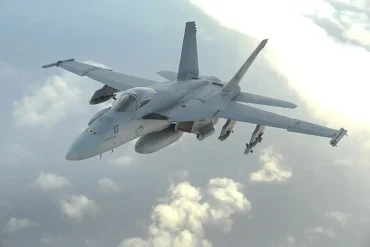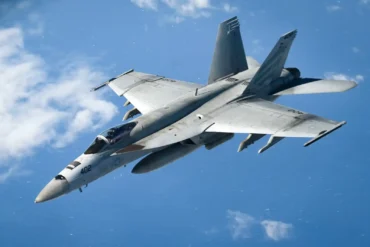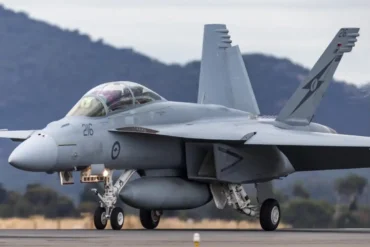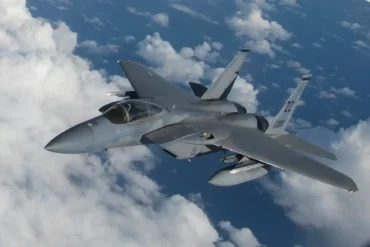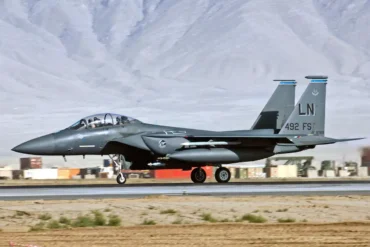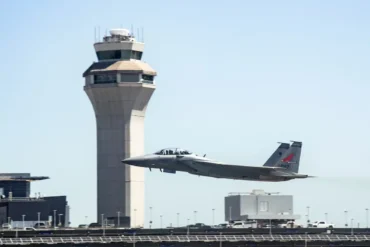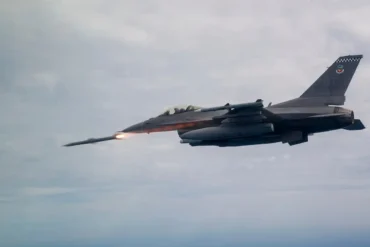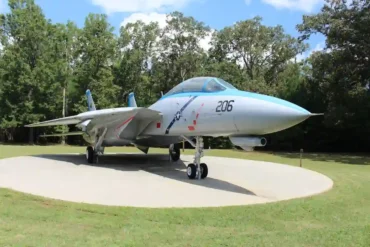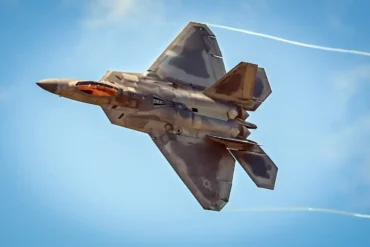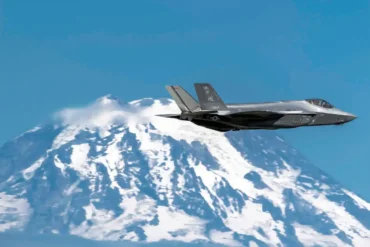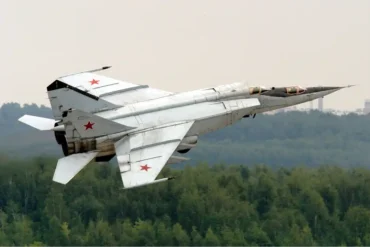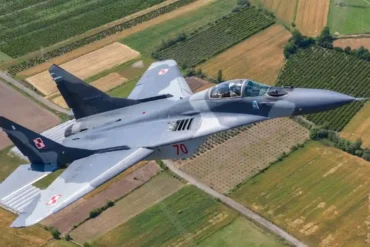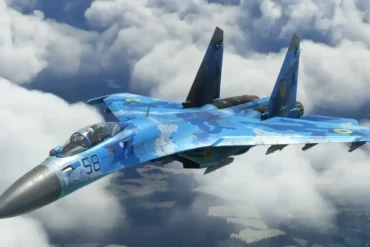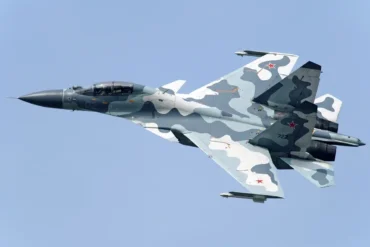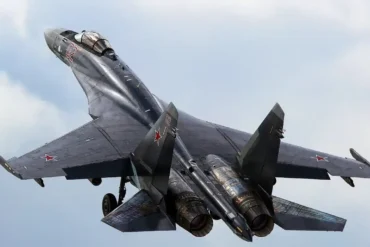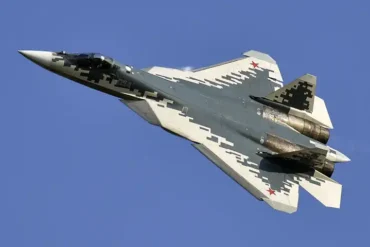The F/A-18E/F Super Hornet is a powerful multirole fighter aircraft designed for a variety of missions, from air superiority to strike operations. With its advanced design and powerful engines, the Super Hornet is capable of extraordinary speeds, making it one of the most formidable fighter jets in the world. In this article, we will examine the F/A-18E/F Super Hornet’s top speed in multiple units: Mach, kilometers per hour (km/h), and miles per hour (mph). We will then delve deep into the aircraft’s specifications, performance characteristics, and the factors that contribute to its speed capabilities.
What is the Top Speed of the F/A-18E/F Super Hornet?
The F/A-18E/F Super Hornet boasts an impressive top speed, making it a key asset in both combat and defense missions. Its maximum speed is as follows:
- Mach 1.6
- 1,915 km/h (1,190 mph)
The Super Hornet can reach this top speed at an altitude of 40,000 feet (12,190 meters). This remarkable capability allows the aircraft to quickly engage enemies, intercept threats, and carry out high-speed strike missions.
Top Speed at Sea Level
At sea level, the Super Hornet’s speed is slightly reduced, but it still remains highly capable. Its maximum speed at sea level is:
- Mach 1.06
- 806 mph (1,296 km/h)
This makes the F/A-18E/F Super Hornet adaptable to both high-altitude and low-altitude operations, ensuring it is a versatile platform for a wide range of missions.
F/A-18E/F Super Hornet: Design and Performance Overview
General Characteristics
The F/A-18E/F Super Hornet is part of the Hornet family, a series of aircraft that have been in service with the United States Navy since the early 1980s. However, the Super Hornet model, which entered service in 1999, features numerous improvements over its predecessor, the F/A-18 Hornet. The F/A-18E is a single-seat version, while the F/A-18F is a tandem-seat variant, offering both a pilot and a weapon systems officer.
Key general characteristics of the F/A-18E/F Super Hornet include:
- Crew: 1 (F/A-18E), 2 (F/A-18F)
- Length: 60 ft 1.25 in (18.31 m)
- Wingspan: 44 ft 8.5 in (13.62 m)
- Height: 16 ft (4.88 m)
- Wing Area: 500 sq ft (46.5 m²)
- Empty Weight: 32,081 lb (14,552 kg)
- Gross Weight: 47,000 lb (21,320 kg) when equipped for fighter escort
- Max Takeoff Weight: 66,000 lb (29,937 kg)
- Internal Fuel Capacity: F/A-18E: 14,700 lb (6,668 kg), F/A-18F: 13,760 lb (6,241 kg)
- External Fuel Capacity: Up to 4 × 480 US gallon (1,817 L) tanks, totaling 13,040 lb (5,915 kg)
The aircraft is powered by two General Electric F414-GE-400 turbofan engines, each capable of producing 13,000 lbf (58 kN) of thrust in dry mode, and 22,000 lbf (98 kN) with afterburner engaged.
Performance Capabilities
The F/A-18E/F Super Hornet is built for speed, agility, and versatility. It is engineered to maintain high speeds while carrying out complex combat and air superiority missions. Here are some of its performance statistics:
- Maximum Speed: Mach 1.6 (1,915 km/h or 1,190 mph)
- Cruise Speed: 482 knots (555 mph or 893 km/h)
- Range: 1,275 nautical miles (1,458 miles or 2,346 km) with armament of two AIM-9 missiles
- Combat Range: 444 nautical miles (511 miles or 822 km) with 2 × 480-gallon (1,800 L) drop tanks
- Service Ceiling: 52,300 ft (15,940 m)
- Rate of Climb: 44,882 ft/min (228 m/s)
Climbing and Endurance
The F/A-18E/F Super Hornet also excels in its climbing capabilities, with a maximum climb rate of nearly 45,000 feet per minute. This allows it to quickly gain altitude during engagements and evade threats at high altitudes. Its service ceiling of 52,300 feet ensures it can operate effectively in extremely high-altitude scenarios.
When it comes to endurance, the Super Hornet is equipped with a considerable fuel capacity, allowing for long-range missions with or without external fuel tanks. Its combat radius for air-to-air operations is 462 nautical miles (532 miles or 856 km), providing it with the ability to cover substantial distances while remaining highly effective.
Factors Influencing the Speed of the F/A-18E/F Super Hornet
Thrust-to-Weight Ratio
The thrust-to-weight ratio of the Super Hornet plays a crucial role in its speed capabilities. At a ratio of 0.93, the Super Hornet has an excellent power-to-weight balance, contributing to its high-speed performance and exceptional maneuverability.
Wing Loading
The Super Hornet’s wing loading is 94.0 lb/sq ft (459 kg/m²) at its empty weight. At maximum takeoff weight, the wing loading increases to 127.0 lb/sq ft (620 kg/m²). The lower wing loading at lighter weights enhances the aircraft’s maneuverability, especially at higher speeds, while the higher wing loading at maximum weight ensures better stability during high-speed operations.
Design and Aerodynamics
The Super Hornet’s design emphasizes speed and agility, with advanced aerodynamics contributing to its high-speed performance. Its canard design (small, forward-mounted wing surfaces) and large tailfins provide excellent control at high speeds, allowing the aircraft to maintain stability and maneuverability at Mach 1.6.
Engine Performance
The General Electric F414-GE-400 turbofan engines are among the most advanced in the world. The engines offer both high thrust and fuel efficiency, enabling the Super Hornet to maintain its top speed over long distances. The afterburner feature provides an additional boost of thrust, which is especially important during combat missions or intercepting enemy aircraft.
Operational Uses of the F/A-18E/F Super Hornet
The F/A-18E/F Super Hornet is a multirole aircraft, capable of carrying out a wide variety of missions beyond simply achieving top speeds. Its design and performance capabilities make it a critical component in the U.S. Navy‘s arsenal for air superiority, close air support, strike missions, and air-to-air combat.
Air-to-Air Combat
In air-to-air combat, the Super Hornet’s speed and maneuverability are critical. Its ability to quickly accelerate to high speeds allows it to gain an advantage over enemy aircraft, especially when engaging in dogfights or intercepting hostile targets at high altitudes. The Super Hornet’s top speed of Mach 1.6 allows it to easily keep pace with most adversaries while maintaining a significant edge in speed and maneuverability.
Strike Missions
For strike missions, the Super Hornet is capable of delivering a wide range of precision-guided munitions while flying at high speeds to avoid detection or interception. The aircraft’s high-speed capabilities enable it to carry out strike operations over long distances, making it a versatile asset in a variety of military scenarios.
Fleet Defense and Fighter Escort
The Super Hornet is also tasked with fleet defense and fighter escort missions. It provides essential protection for carrier strike groups by intercepting hostile aircraft and defending against incoming threats. Its range and speed make it a vital element of naval operations, allowing it to escort bombers and other aircraft during critical missions.
Conclusion
The F/A-18E/F Super Hornet is a highly versatile, high-speed fighter aircraft capable of performing a wide range of missions at top speeds of Mach 1.6 (1,915 km/h or 1,190 mph). Its advanced engine technology, aerodynamics, and structural design ensure that it remains one of the most formidable aircraft in the skies today. Whether engaging in air combat, striking enemy targets, or providing fleet defense, the Super Hornet’s speed and performance make it an indispensable asset to the U.S. Navy and its allies around the world.

